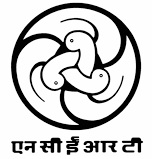
| Board | National Council of Educational Research and Training |
| Class | 10th/SSLC |
| Subject | Maths |
| Download | Text Book |
| Document Type | |
| Website | https://ncert.nic.in/index.php?ln= |
NCERT Class 10th Maths Book
Download Chapter-Wise NCERT Class X Mathematics Text Book PDF Download Online Free
Download NCERT Text Books For All Classes Here
Download NCERT Class 10th Maths Book
- NCERT Class 10th Maths Text Book Chapter 1
- NCERT Class 10th Maths Text Book Chapter 2
- NCERT Class 10th Maths Text Book Chapter 3
- NCERT Class 10th Maths Text Book Chapter 4
- NCERT Class 10th Maths Text Book Chapter 5
- NCERT Class 10th Maths Text Book Chapter 6
- NCERT Class 10th Maths Text Book Chapter 7
- NCERT Class 10th Maths Text Book Chapter 8
- NCERT Class 10th Maths Text Book Chapter 9
- NCERT Class 10th Maths Text Book Chapter 10
- NCERT Class 10th Maths Text Book Chapter 11
- NCERT Class 10th Maths Text Book Chapter 12
- NCERT Class 10th Maths Text Book Chapter 13
- NCERT Class 10th Maths Text Book Chapter 14
- NCERT Class 10th Maths Text Book Chapter 15
Introduction:
In Class IX, you began your exploration of the world of real numbers and encountered irrational numbers. We continue our discussion on real numbers in this chapter. We begin with two very important properties of positive integers in Sections 1.2 and 1.3, namely the Euclid’s division algorithm and the Fundamental Theorem of Arithmetic. Euclid’s division algorithm, as the name suggests, has to do with divisibility of integers.
Stated simply, it says any positive integer a can be divided by another positive integer b in such a way that it leaves a remainder r that is smaller than b. Many of you probably recognise this as the usual long division process. Although this result is quite easy to state and understand, it has many applications related to the divisibility properties of integers. We touch upon a few of them, and use it mainly to compute the HCF of two positive integers.
The Fundamental Theorem of Arithmetic, on the other hand, has to do something with multiplication of positive integers. You already know that every composite number can be expressed as a product of primes in a unique way—this important fact is the Fundamental Theorem of Arithmetic. Again, while it is a result that is easy to state and understand, it has some very deep and significant applications in the field of mathematics. We use the Fundamental Theorem of Arithmetic for two main applications.
Euclid’s Division Lemma
Consider the following folk puzzle*.
A trader was moving along a road selling eggs. An idler who didn’t have much work to do, started to get the trader into a wordy duel. This grew into a fight, he pulled the basket with eggs and dashed it on the floor. The eggs broke. The trader requested the Panchayat to ask the idler to pay for the broken eggs.
The Panchayat asked the trader how many eggs were broken. He gave the following response:
• If counted in pairs, one will remain;
• If counted in threes, two will remain;
• If counted in fours, three will remain;
• If counted in fives, four will remain;
• If counted in sixes, five will remain;
• If counted in sevens, nothing will remain;
• My basket cannot accomodate more than 150 eggs.
So, how many eggs were there? Let us try and solve the puzzle. Let the number of eggs be a. Then working backwards, we see that a is less than or equal to 150:
• If counted in sevens, nothing will remain, which translates to a = 7p + 0, for some natural number p. If counted in sixes, a = 6 q +5, for some natural number q.
• If counted in fives, four will remain. It translates to a = 5w + 4, for some natural number w.
• If counted in fours, three will remain. It translates to a = 4s + 3, for some natural number s.
• If counted in threes, two will remain. It translates to a = 3t + 2, for some natural number t.
• If counted in pairs, one will remain. It translates to a = 2u + 1, for some natural number u.
That is, in each case, we have a and a positive integer b (in our example, b takes values 7, 6, 5, 4, 3 and 2, respectively) which divides a and leaves a remainder r (in our case, r is 0, 5, 4, 3, 2 and 1, respectively), that is smaller than b
Similar Searches:
ncert x science text book , ncert class x text book (old edition) , ncert class x textbook , ncert class x maths text book , ncert class x history textbook , ncert class x geography textbook , ncert class x english textbook , ncert x maths textbook , class x ncert text book , ncert text book class x science , ncert text book class x , class x english text book ncert , ncert textbook class x xi xii , e ncert textbooks , science-text book for class x- ncert publication , ncert class x english textbook pdf , ncert x grade science textbook , ncert class x science textbook , ncert class x maths textbook , ncert class x maths textbook solutions , ncert textbook 9
Have a question? Please feel free to reach out by leaving a comment below

![Download Karnataka Class 9th Science Text Book [English] Karnataka-Logo](https://www.recruitmentzones.in/wp-content/uploads/2022/01/Karnataka-Logo-150x150.jpg)
